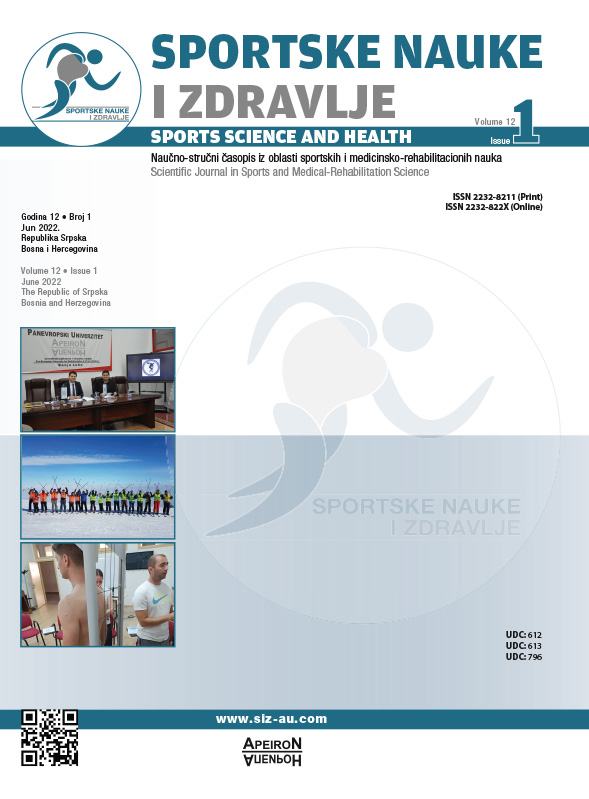Effects of Different Concurrent Training Methods on Aerobic and Anaerobic Capacity in U 21 soccer players
DOI:
https://doi.org/10.7251/SSH2201010YAbstract
Purpose: The main aim of this study is to investigate the effect of the concurrent training method of muscular strength training or muscular endurance training combined with high-intensity interval training (HIIT) on the aerobic threshold (AerT) and anaerobic threshold (AT).
Material and methods: Twenty soccer player from the University team were recruited. Participants were divided into muscular strength training group (MS, N = 10) and the muscular endurance training group (ME, N = 10). All subjects sustained the regular specific training programs during the experimental period and had additional different concurrent training twice per week for twelve weeks. power output during the graded exercise test, peak power (PP), average power (AP), fatigue index (FI) during anaerobic power test were tested by graded exercise test on Wingate anaerobic power test. as well as one-repetition maximum (1-RM) of lower limbs and Romanian Deadlift (RDL) - Hamstring Leg Exercise were tested simultaneously before and after the experiment. Data were analysed by two-way mixed design ANOVA.
Results: After 12 weeks of training, the AT power output, 1-RM of half squat and the 1-RM of RDL were significantly higher than before training (MS: 407.12 ± 52.92 vs 431.78± 48.84 watt, 157.45 ± 35.66 vs 169.87 ± 47.31 kg, 120.16± 15.28 vs 122.56± 19.39 kg; ME: 411.11 ± 48.48 vs 429.16 ± 52.13 watt, 135.34 ± 26.27 vs 144.41 ± 35.78 kg, 96.93 ± 24.57 vs 103.46 ± 24.15 kg, p <.05) in MS group and ME group. Time to exhaustion of graded exercise test in ME group was significantly higher than before training (22.13 ± 7.73 vs 25.78 ± 8.74 min, 23.44 ± 7.73 vs 24.78 ± 8.74 p <.05). The AerT power output, PP, AP, and FI were no significant changes in both groups. Nevertheless, all dependent variables were no significant difference between groups before and after training.
Conclusion: Conducting the concurrent training method of muscular strength training or muscular endurance training combined with HIIT twice per week for twelve weeks increased soccer players’ aerobic endurance as well as 1-RM of lower limbs. The concurrent training method of muscular endurance training combined with HIIT also promoted the performance of time to exhaustion. However, there were no significant difference between two training methods and minor significant benefits on anaerobic power.
